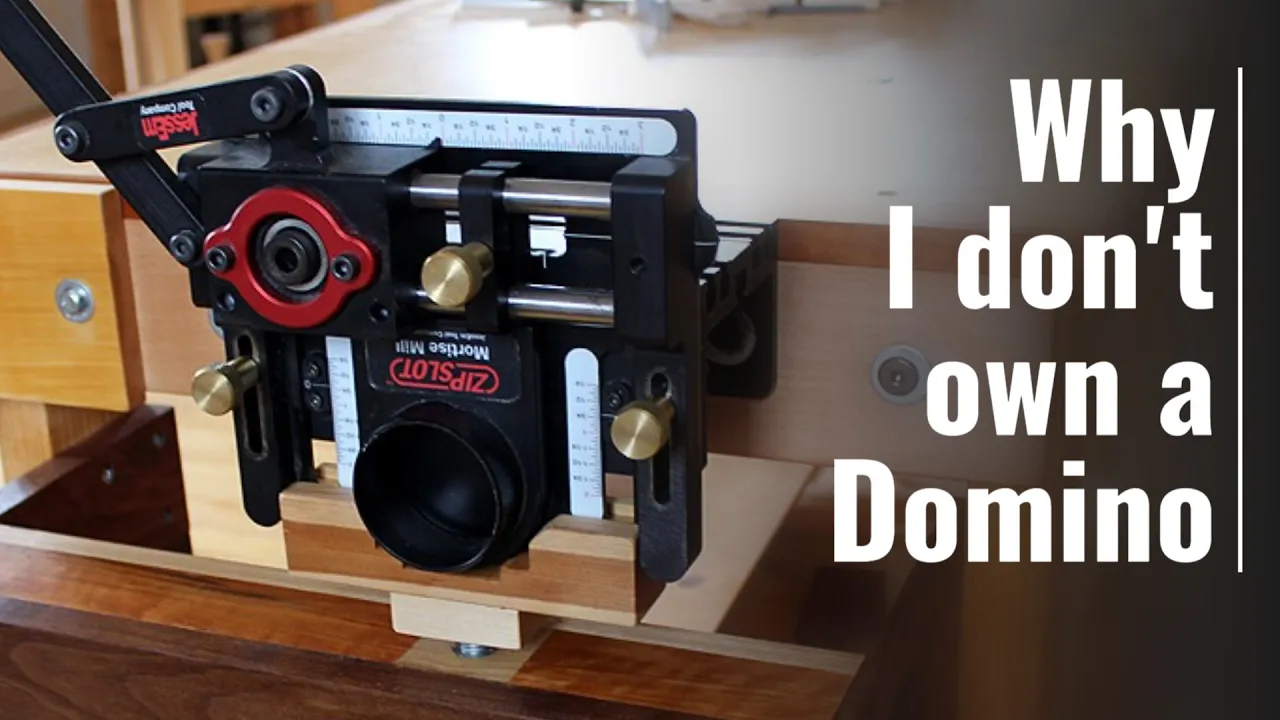This educational video was created by Norman Pirollo from WoodSkills. It showcases a practical, affordable solution for woodworkers who want the functionality of a Domino Joiner without the hefty price tag.
Rather than relying on expensive equipment, Norman repurposed a Jessem Mortise Mill into a horizontal slot mortiser. This DIY upgrade results in accurate, repeatable joinery for a fraction of the cost and is especially useful for loose tenon joinery in furniture builds.
Watch the full video and subscribe to Norman’s channel:
An Alternative to the Domino Joiner
The Domino Joiner is popular for a reason—it’s fast, precise, and easy to use. But at over $1,000, it’s not in reach for every woodworker.
Norman’s solution offers similar results using a $120 Jessem Mortise Mill, modified to work horizontally with an end mill bit. This setup lets him cut clean, consistent mortises for loose tenon joinery across a wide range of furniture projects.
The Original Challenges
Initially, the Mortise Mill wasn’t very practical. It had to be clamped to the edge of a workbench, which made vertical and horizontal alignment difficult.
After some frustration, the tool was set aside. But rather than give up on it entirely, Norman revisited the system and mounted it horizontally for better usability.
Horizontal Conversion Benefits
Turning the tool into a fixed, horizontal slot mortiser drastically improved its performance. Now, boards can be brought to the tool and clamped in place with ease.
This shift allowed Norman to cut accurate mortises without the awkward workarounds required in the original vertical configuration. The result is a more intuitive workflow, especially when processing multiple components.
Loose Tenon Joinery Basics
Loose tenon joinery offers strong, reliable connections without requiring dovetails, dowels, or elaborate setups. Mortises are cut into both mating pieces, and a floating tenon bridges the gap.
This method is quick to execute and well-suited for batch production. Norman frequently uses it when building cabinets, table stands, and other furniture projects that require repeatable joints.
Repeatability Over Portability
With a Domino, the tool is brought to the work. With this system, the work is brought to the tool.
While this might sound limiting at first, it allows for highly repeatable cuts and more stable setups. For woodworkers working on larger batches or multiple matching parts, this consistency can be a big advantage.
Adding Micro-Adjustment for Precision
One of the most effective improvements Norman made was adding a micro-adjust feature to the Mortise Mill. This allows him to dial in the vertical height of the cutting carriage with ease.
Before this upgrade, adjusting height required loosening screws and guessing the right placement—an awkward and imprecise task. Now, the micro-adjust system makes fine tuning fast and accurate.
Quick and Reliable Setup
To use the mortiser, the boards are securely clamped in place. The horizontal mounting surface (in Norman’s case, a rolling shop cart) provides a stable base for positioning the stock.
He uses visual crosshairs on the machine to line up mortise positions. Once aligned, the drill chuck—outfitted with an end mill and stop collar—cuts consistent mortises to the desired depth.
Marking and Cutting Mortises
Marking the boards ahead of time helps keep the process organized. Centerlines and distance-from-end measurements guide where each mortise should go.
Once the bit is in place and depth is set, the slot is milled cleanly using the drill’s forward motion. The stop collar ensures uniform depth across every part.
Flexibility with Different Materials
Thanks to the adjustable carriage and clamp design, the system can handle boards of varying thicknesses. Whether working with cabinet rails or table legs, Norman can adjust on the fly without reconfiguring the setup.
This flexibility allows him to maintain high output and clean results, even when working with irregular or oversized parts.
Cleaner Workspace with Vacuum Integration
Another benefit of this system is dust control. Norman integrates a vacuum to keep debris clear during cutting, which leads to better visibility and a cleaner workspace.
This detail may seem minor, but it improves the working experience significantly—especially during long builds or when cutting lots of joinery.
A Worthwhile Upgrade
Norman’s approach shows that a high-end tool isn’t the only path to precise joinery. With a few modifications and a creative mindset, existing tools can be adapted to serve complex roles.
The result is a slot mortiser that’s fast, versatile, and surprisingly low-cost. It’s a great solution for woodworkers who want Domino-style results without making a major investment.
Final Takeaways
By converting the Jessem Mortise Mill into a horizontal slot mortiser and adding micro-adjustability, Norman created a powerful joinery solution. It’s ideal for batch furniture builds and loose tenon applications, and it costs a fraction of the Domino.
While it may not be as portable, the consistency, precision, and affordability make it well worth considering. For woodworkers building on a budget or looking to expand their capabilities, this is a smart, proven alternative.
Support Norman by visiting his website: https://www.woodskills.com/
